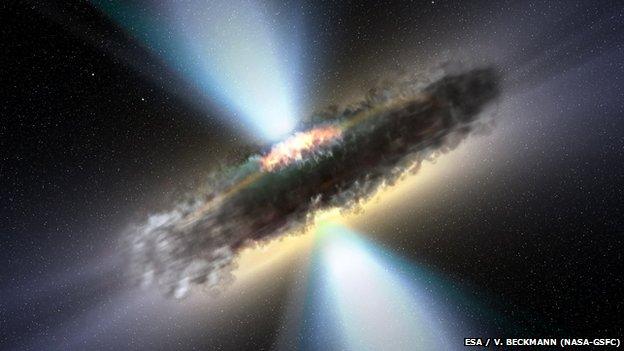Team sees biggest black holes yet
- Published

The newly discovered black holes dwarf previously known heavyweights
A US team has found the two biggest "supermassive" black holes known to science, Nature journal reports.
Sitting at the centres of two nearby galaxies, the two objects have masses close to 10 billion times greater than our Sun.
Such large black holes had been suspected to exist, but, until now, the biggest known was some 6.3 billion times the mass of the Sun.
The study is based on data from ground and space-based telescopes.
Most massive galaxies, including our own Milky Way, are thought to harbour supermassive black holes at their centres.
But these newly discovered black holes are much bigger than would be predicted by extrapolating from observations from their host galaxies.
This suggests that the factors influencing the growth of the largest galaxies and their black holes differ from those influencing smaller galaxies.
The findings come from observations of two nearby galaxies: NGC 3842 and NGC 4889.
Nicholas J McConnell from the University of California, Berkeley, and colleagues report that NGC 3842 has a mass of 9.7 billion solar masses and that a black hole of comparable or greater mass is present in NGC 4889.
Indications that such big black holes must have existed came from observations of the powerful galactic light sources known as quasars.
Measurements of quasars from the early Universe showed that some must be powered by black holes with masses of about 10 billion solar masses.
"These objects probably represent the missing dormant relics of the giant black holes that powered the brightest quasars in the early Universe," Michele Cappellari, from the University of Oxford, wrote in an accompanying viewpoint article in Nature.
- Published16 June 2011
- Published8 July 2010
- Published12 May 2010